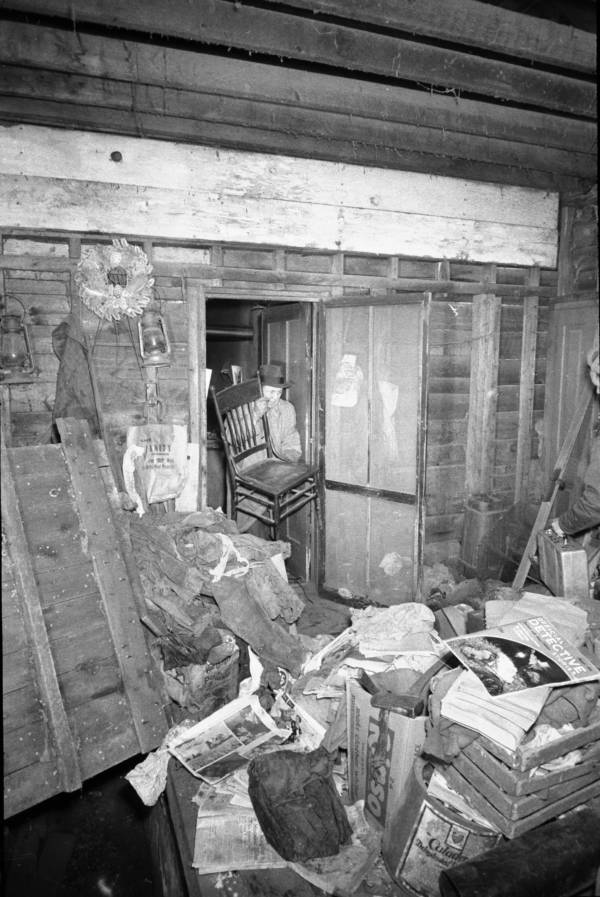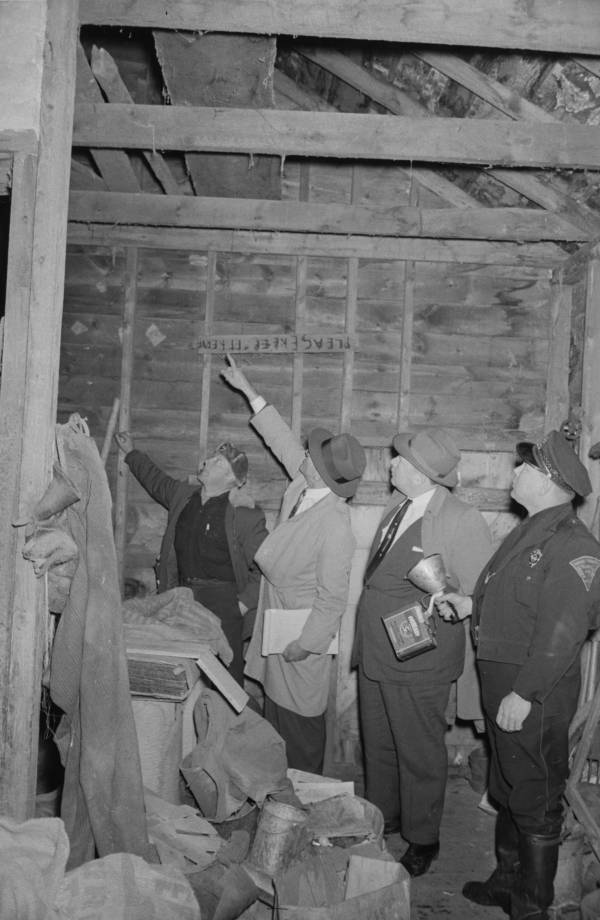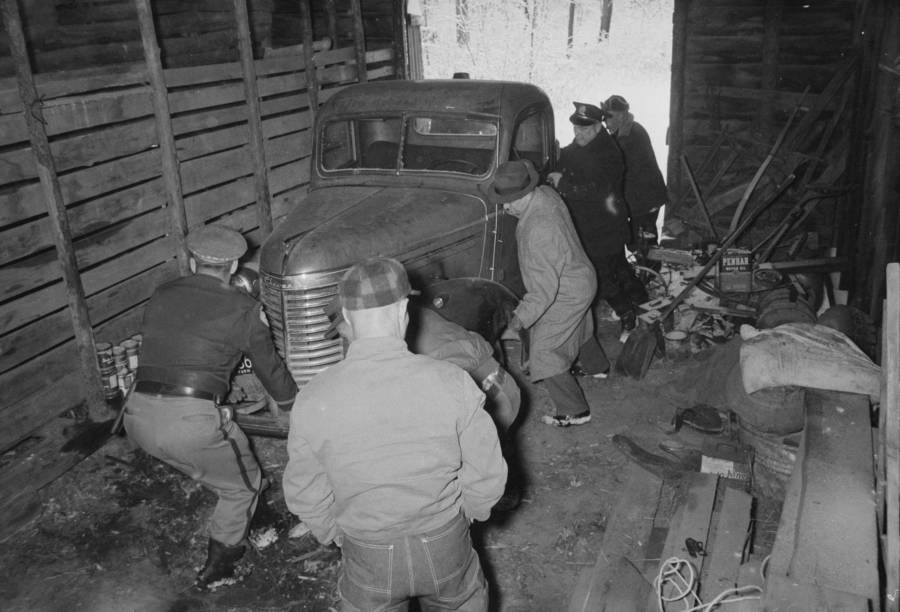How can a seemingly ordinary existence conceal a darkness so profound that it births some of the most horrific acts imaginable? The story of Ed Gein, the "Butcher of Plainfield," is a chilling testament to the capacity for evil that can reside within the human psyche.
The grisly details of Ed Gein's crimes began to emerge in earnest, etching his name into the annals of 20th-century infamy. Living a solitary life in the sizable farmhouse once shared with his parents and elder brother, Gein's descent into madness gradually unfolded, culminating in acts that continue to shock and horrify. The small town of Plainfield, Wisconsin, became the epicenter of a nightmare.
| Category | Details |
|---|---|
| Full Name | Edward Theodore Gein |
| Born | August 27, 1906, La Crosse County, Wisconsin, USA |
| Died | July 26, 1984, Mendota Mental Health Institute, Wisconsin, USA |
| Known For | Grave robbing, necrophilia, and multiple murders. The "Butcher of Plainfield." |
| Crimes Committed | Murder of Bernice Worden and Mary Hogan, grave robbing, body mutilation, and the creation of macabre artifacts from the bodies of his victims. |
| Psychological State | Diagnosed as mentally ill; found legally insane. |
| Influences/Inspirations (as speculated) | A dominant mother, isolation, a fascination with death and anatomy, and perhaps some exposure to pulp magazines and accounts of war atrocities. |
| Legacy | Inspired numerous works of fiction, including the novel "Psycho" and the character Buffalo Bill in "The Silence of the Lambs." Represents an enduring symbol of human depravity. |
| Reference | Biography.com |
An image, published in the Milwaukee Journal on Monday, November 18, 1957, depicted Bernice Worden, one of Gein's victims, in her hardware store in 1956, before her tragic demise. The contrast between the mundane setting and the horror that would soon unfold is a stark reminder of the unpredictable nature of evil.
- Jamie Kennedys Dating Life Girlfriend Affairs Relationships 2024
- Cherokee Dass Wiki Age Biography More Unveiled
In the Wood County Circuit Court, spectators gathered for Ed Gein's sanity hearing, witnessing the legal proceedings surrounding the Plainfield murderer and grave robber. Gein had concealed Bernice Worden's body in his shed, a chilling detail that underscored the extent of his crimes. The court determined Gein to be legally insane, leading to his commitment.
Ed Gein's farmhouse in Plainfield, Wisconsin, presented a facade of rural tranquility, mirroring the deceptive appearance of Jeffrey Dahmer's apartment building in Milwaukee, Wisconsin. Both locations masked the horrors that transpired within their walls, until the truth was exposed with the capture of their owners. Subsequently, these houses of secrets became active crime scenes, filled with evidence of unimaginable acts.
A photograph by Frank Scherschel/Time Life Pictures/Getty Images provides a haunting glimpse of Gein's kitchen at the time of his arrest, with a police officer surveying the scene. The image serves as a stark visual document of the darkness that permeated Gein's life.
- Conor Mcgregors Weight Latest Stats What You Need To Know
- Fast Five 2011 Cast Crew Heist Details Discover Now
The removal of evidence from Gein's house was a painstaking process, a necessary but gruesome task. Photos of the graves Edward Gein had desecrated further exposed the depth of his depravity. The hardware store of Bernice Worden, where Gein shot and killed her, became a site of immense trauma.
The Graveface Museum houses the only public display of authentic artifacts from the Ed Gein case, preserving a tangible link to the chilling events of the past. These artifacts serve as a stark reminder of the darkness within the human soul, allowing us to bear witness to the true extent of the atrocities committed by one of America's most notorious murderers.
Numerous images document the case, including those of Gein himself, as well as the crime scenes. The crime scene photos have left an indelible mark on popular culture, inspiring numerous horror stories and films. Forensic photography, the practice of capturing images at crime scenes, has been a critical tool in investigations for over a century. Some of the earliest and most famous crime scene photos, such as those taken in the home of Parisian woman Madame Debeinche in 1903, reveal the evolution of this critical investigative technique.
The house where Gein lived and committed his heinous acts has become a source of morbid fascination. The photographs that captured the dark history of Ed Geins residence provides chilling reminders.
While the conviction is controversial, the lipstick killer, thought to be Illinois criminal William Heirens, also left behind a message for whoever came across the victim. The crime scene was also famously photographed.
Ed Gein's crimes are a stark reminder of the capacity for evil. Though not the most prolific killer, the nature of his acts was beyond horrific. The crime scene photos offer a glimpse into the disturbed mind of Gein.
In a strange way, Gein's acts of murder were a sign of the times. On November 16, 1957, the body of Bernice Worden was discovered in Plainfield, Wisconsin, the final victim of Edward Gein.
Ed Geins bizarre handicraft became the inspiration for the character of another serial killer, known as buffalo bill, in the 1991 crime thriller the silence of the lambs.Much like eddie, buffalo bill was a deeply disturbed killer with a savage pathology who treasured womens skin, which he removed to fashion himself a woman suit in some
The "Butcher of Plainfield" and the "Plainfield Ghoul" are some of the names given to Ed Gein, and the real crime scene locations are still a source of interest.
Ed Gein's arraignment for the murder of eleven people was witnessed by William Belter, his lawyer, according to reports.
Photographs show forensic specialists examining the disorganized home of serial killer Ed Gein in Plainfield, Wisconsin, in November. Forensic photography has a long history.
The world was captivated by the macabre. The discovery of Bernice Worden's body on November 16, 1957, marked the final chapter in a horrific series of events.
In the book "Ed Gein: Americas Most Bizarre Murderer," Judge Robert H. Gollmar, who presided over Geins 1968 trial, hinted at the possibility of Gein being responsible for other disappearances. The mystery around Geins life extends further back. Two hunters, Victor Travis and Ray Burgess, vanished in 1951 after a night out. The connection to one local woman's disappearance became apparent when authorities searched his isolated farmhouse, uncovering a true house of horrors. The farmhouse was filled with Gein's ghastly trophies.
The case took another turn when Gein reportedly bashed his head against a wall, making his admission inadmissible in court. Gein's friends and the community were devastated by his actions.
It's important to clarify that Alfred Hitchcock was not inspired by Ed Gein. Robert Bloch wrote "Psycho" in 1959, three years after Gein was found.
Edward Theodore Gein's case was a key inspiration, as it brought forth such a response from the public.
Gein was responsible for numerous crimes, including the deaths of Mary Hogan in 1954, and Bernice Worden in 1957. The disappearance of Bernice led to the full extent of Gein's crimes.
Forensic photography, or the practice of taking photos at the scene of a crime, has been around for over a century, and these photographs allow us to bear witness to the full extent of the atrocities committed by one of Americas most notorious murderers. The case of Edward Gein, a serial killer, stands out. In fact, some crime scene photos have been pivotal in building cases against some of historys most famous murders. Join us as we visit the real crime scene locations of serial killer ed gein, also known as the butcher of plainfield and the plainfield ghoul.



Detail Author:
- Name : Ms. Magnolia Klein Sr.
- Username : satterfield.jonathan
- Email : tabitha54@johnston.com
- Birthdate : 1981-04-24
- Address : 379 Zoila Rest Suite 468 Johnstonshire, OR 39534-4247
- Phone : 1-424-343-6200
- Company : Larson, Hackett and Hintz
- Job : Grinder OR Polisher
- Bio : Dolor dolor laudantium sapiente quisquam. Facilis dolore est commodi qui. Quaerat natus et sunt dolor.
Socials
linkedin:
- url : https://linkedin.com/in/vonruedenm
- username : vonruedenm
- bio : Qui est ipsa optio possimus molestias.
- followers : 532
- following : 1418
tiktok:
- url : https://tiktok.com/@melody6615
- username : melody6615
- bio : Odio non et voluptatem optio modi quod nobis.
- followers : 5988
- following : 301